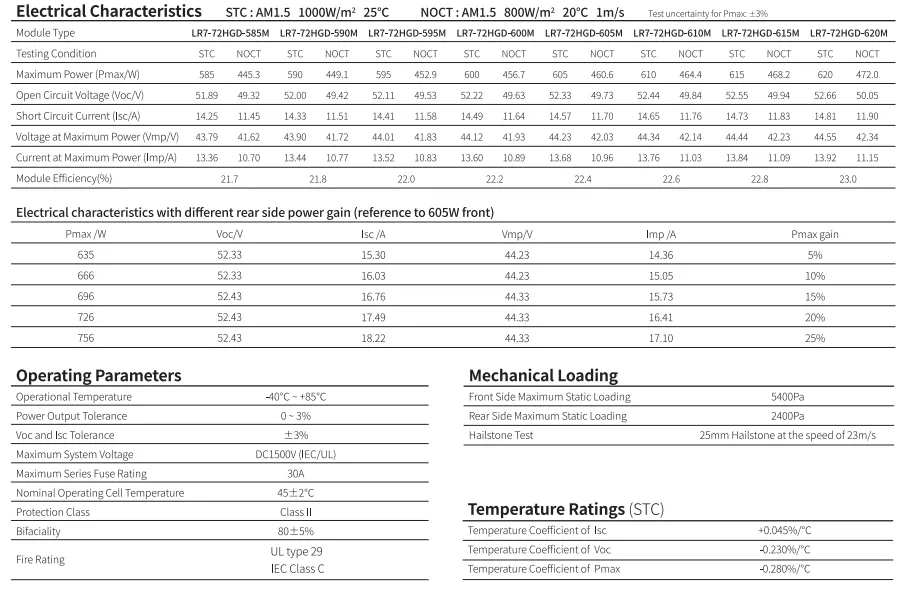Understanding the Dimensions and Efficiency of Monocrystalline Solar Panels for Optimal Energy Production
Understanding the Size of Monocrystalline Solar Panels
Monocrystalline solar panels have gained popularity in the renewable energy market due to their efficiency and space-saving benefits. However, when considering the integration of these panels into residential or commercial applications, one crucial factor to take into account is the size of the panels. Understanding the size of monocrystalline solar panels can help consumers make informed decisions about their solar energy investments.
What Are Monocrystalline Solar Panels?
Monocrystalline solar panels are made from a single crystal structure of silicon, which allows them to achieve higher efficiency rates compared to their polycrystalline counterparts. The typical efficiency of monocrystalline panels ranges from 15% to 22%, meaning they can convert a significant portion of sunlight into usable electricity. However, the size of the panels can greatly affect the overall energy output, installation requirements, and the space they occupy.
Standard Sizes of Monocrystalline Panels
Most monocrystalline solar panels come in standard sizes, typically ranging from 60-cell to 72-cell configurations. A 60-cell panel generally measures about 65 inches (165 cm) by 39 inches (99 cm) and generates around 250 to 350 watts of power. In contrast, a 72-cell panel tends to be larger, measuring approximately 77 inches (195 cm) by 40 inches (101 cm) and producing about 350 to 450 watts of power.
The size of the panel impacts its weight, handling, and installation methods
. Standard panels often weigh between 40 to 50 pounds (18 to 23 kg), which influences the mounting system and roof structure if the panels are installed on a building.size of monocrystalline solar panels

Factors Influencing Panel Size Selection
1. Energy Requirements The primary consideration when selecting the size of monocrystalline solar panels is the energy needs of the household or facility. Calculating the total daily energy consumption will help determine how many panels are required. Larger panels may generate more power, reducing the number of units needed for installation.
2. Space Availability Urban environments often have limited roof space for solar panel installations. Monocrystalline panels are ideal in these scenarios because they offer higher efficiency within a smaller footprint. Homeowners with roof obstructions or irregular shapes may also benefit from the modular nature of solar installations.
3. Aesthetic Considerations Some consumers prefer monocrystalline panels due to their sleek, all-black appearance, which can blend better with the roofline of a home. The size of the panels should also be considered in terms of visual impact. Smaller panels may be more visually appealing in certain architectural contexts.
4. Cost-Benefit Analysis Larger panels may cost more upfront but can lead to greater energy production and savings in the long run. A careful analysis of the initial investment versus energy yield over time is essential for making an informed decision.
Conclusion
In conclusion, the size of monocrystalline solar panels plays a significant role in determining their feasibility and efficiency in various applications. Homeowners and businesses need to evaluate their energy requirements, available space, aesthetic preferences, and financial considerations before determining which panel size is best suited for their solar installation. By understanding these factors, consumers can maximize the benefits of solar energy and contribute to a more sustainable future. Embracing solar technology is not only a choice for personal energy independence but also a commitment to environmental stewardship.
-
Unlocking Energy Freedom with the Off Grid Solar InverterNewsJun.06,2025
-
Unlock More Solar Power with a High-Efficiency Bifacial Solar PanelNewsJun.06,2025
-
Power Your Future with High-Efficiency Monocrystalline Solar PanelsNewsJun.06,2025
-
Next-Gen Solar Power Starts with Micro Solar InvertersNewsJun.06,2025
-
Harnessing Peak Efficiency with the On Grid Solar InverterNewsJun.06,2025
-
Discover Unmatched Efficiency with the Latest String Solar InverterNewsJun.06,2025







